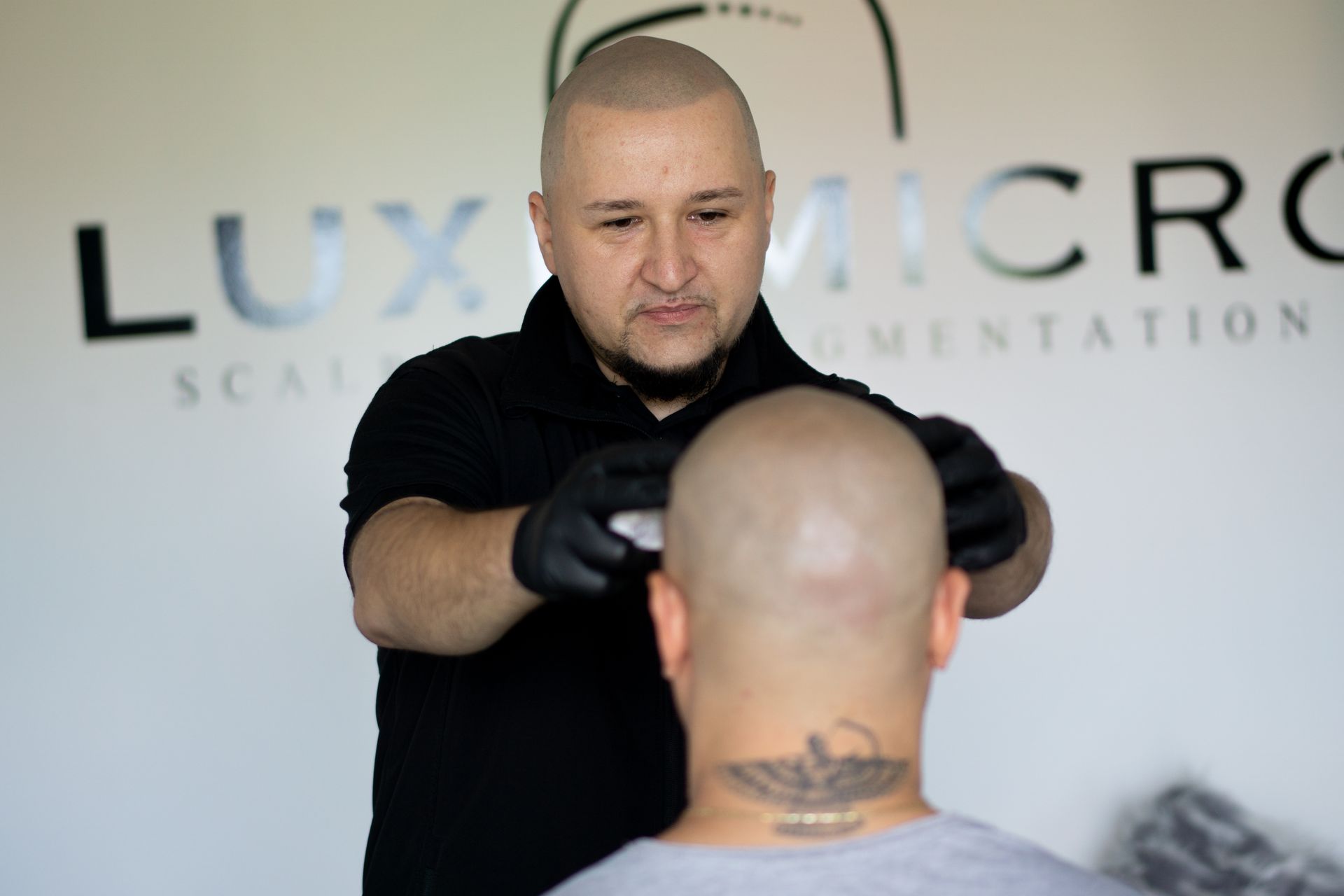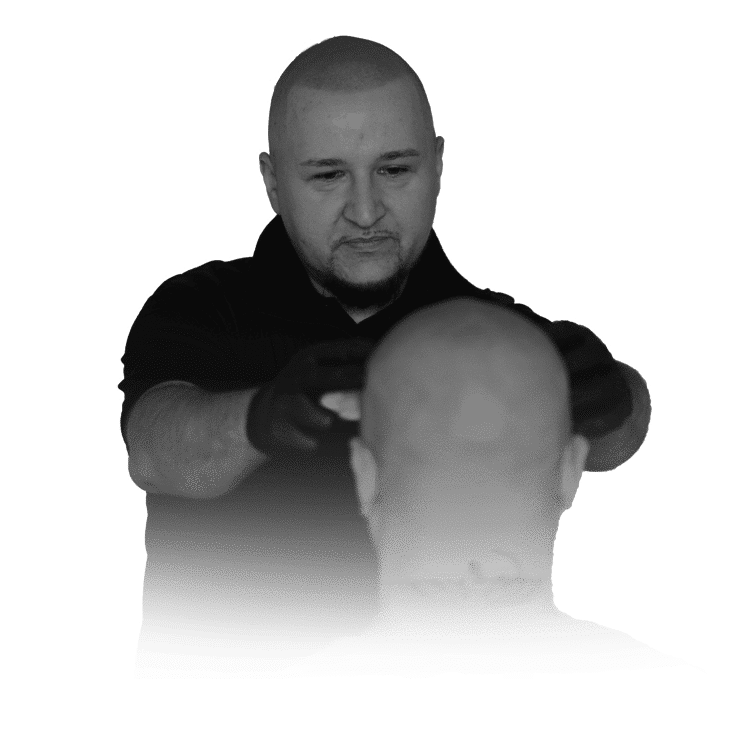Scalp Micropigmentation
Where Do You Find Scalp Micropigmentation in Melbourne, Australia

What is Scalp micropigmentation ( SMP )?
Scalp micropigmentation (SMP) is a non-surgical cosmetic procedure designed to give the appearance of a fuller head of hair. It involves the application of natural pigments to the scalp using micro-needles, similar to the process of tattooing. This technique creates the illusion of hair follicles or tiny hair stubbles, effectively camouflaging areas of thinning hair or baldness.
SMP is suitable for various degrees of hair loss, including receding hairlines, pattern baldness, alopecia, and even to conceal scars from hair transplant surgeries. The pigments used are specially formulated to match the natural hair color and skin tone of the individual, ensuring a realistic and natural look.
The procedure typically requires multiple sessions to achieve the desired density and coverage, with each session lasting a few hours. The results are long-lasting, though touch-ups may be necessary over time due to natural fading of the pigments.
SMP offers a relatively low-maintenance solution for hair loss, with minimal recovery time and fewer risks compared to surgical hair restoration methods. It's a popular choice for those seeking a cost-effective and visually effective alternative to traditional hair loss treatments.
How Long Does Scalp Micropigmentation last?
Scalp Micropigmentation (SMP) typically lasts between 3 to 4 years before a touch-up is needed. The longevity of SMP can be influenced by several factors, including:
- Skin Type: Oily skin may cause the pigment to fade faster than other skin types.
- Sun Exposure: Excessive sun exposure can accelerate the fading process.
- Pigment Quality: Higher-quality pigments tend to last longer.
- Aftercare: Proper aftercare, such as avoiding harsh shampoos and following the technician's advice, can extend the life of the treatment.
- Lifestyle: Activities that cause excessive sweating or frequent washing of the scalp can affect the durability of the pigmentation.
Regular touch-ups every few years can help maintain the desired appearance.
Is Scalp Micropigmentation a Hair Tattoo?
Yes, scalp micropigmentation (SMP) is often referred to as a "hair tattoo." Both SMP and traditional tattoos involve the use of needles and pigment to create designs on the skin, but there are several key differences:
- Purpose: SMP is designed to replicate the appearance of hair follicles, creating the illusion of a fuller head of hair or a closely shaved scalp. Traditional tattoos are typically used to create decorative or symbolic designs on the skin.
- Technique: The technique for SMP involves applying tiny dots of pigment in the scalp's upper dermis layer to mimic the look of hair follicles. This requires precision to ensure a natural appearance. Traditional tattooing generally involves deeper penetration into the skin and can cover larger areas with more complex designs.
- Pigments: The pigments used in SMP are specially formulated to match the color of natural hair and fade gradually over time, allowing for more natural-looking results as the client ages. Traditional tattoo inks come in a wide range of colors and are designed to last longer, though they may change color over time.
- Equipment: The equipment used for SMP is typically finer and more specialized for creating the small, detailed dots needed to replicate hair follicles, whereas traditional tattoo machines are designed to handle a variety of needle sizes for different artistic effects.
- Aftercare and Fading: Both procedures require aftercare to ensure proper healing, but the aftercare instructions and fading patterns can differ. SMP may need touch-ups every few years, while traditional tattoos can last a lifetime but may also require touch-ups to maintain their appearance.
In essence, while SMP shares some similarities with traditional tattooing, its specialized techniques, pigments, and purpose distinguish it as a unique form of cosmetic treatment.
Can Scalp Micropigmentation Be Removed?
Yes, scalp micropigmentation (SMP) can be removed, although the process can be challenging and may require multiple sessions. The most common methods for removing SMP are:
- Laser Removal: This is the most effective and widely used method for removing SMP. It involves using laser light to break down the pigment particles in the skin. The body's immune system then gradually removes these particles. Multiple sessions may be needed depending on the depth and density of the pigment.
- Saline Removal: This method involves injecting a saline solution into the treated area. The solution lifts the pigment out of the skin, which is then removed during the healing process. This method may also require several sessions and is generally less effective than laser removal.
- Dermabrasion: This is a more invasive method that involves physically removing the top layers of skin where the pigment resides. It's less commonly used due to its higher risk of scarring and longer recovery time.
- Chemical Removal: Similar to saline removal, this method uses chemicals to break down the pigment. It's less common and can be harsher on the skin, with a higher risk of complications.
Each removal method has its pros and cons, and the best option depends on factors such as the depth of pigment, skin type, and overall health of the individual. Consulting with a professional who specializes in SMP removal can help determine the most suitable approach.
At Luxe Micro, we are the most experienced SMP treatment in Melbourne, Australia since 2017 that specializes in recreating most natural hairlines and blend in Australia. To learn more or to schedule a consultation, contact us today at info@luxemicro.com.au or call 1300 131 667







